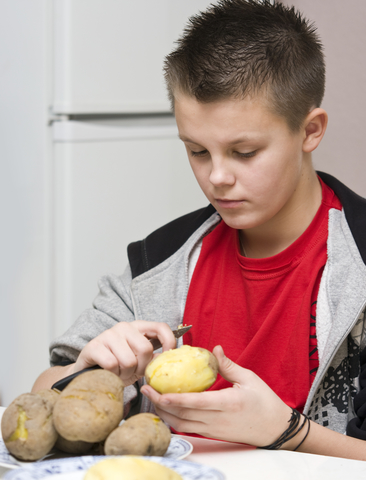 Living with challenging family circumstances has been described as ‘living with an elephant’ in the room where everyone pretends it isn’t there and no-one wants to talk about it. Despite the wealth of research available in the field of bereavement, palliative care and mental health very little is actually known about the lived experiences of children and young people living with a loved one who is seriously ill and the impact that this has upon their lives.
Living with challenging family circumstances has been described as ‘living with an elephant’ in the room where everyone pretends it isn’t there and no-one wants to talk about it. Despite the wealth of research available in the field of bereavement, palliative care and mental health very little is actually known about the lived experiences of children and young people living with a loved one who is seriously ill and the impact that this has upon their lives.
In the absence of data our research carried out by the Children’s Research Centre focused on three key areas. Firstly we wanted to find out how many children and young people are living with a loved one who is seriously ill; secondly, their experiences and thirdly, how their needs could be met. In order to examine the extent of need throughout the UK we drew upon longitudinal data from the British Millennium Cohort Study. In addition, in-depth case study analysis of existing support– although limited – enabled us to build up a detailed picture of how young people aged 18 – 23 years, experience living with a family health crisis and the nature of the services they require based on interviews and field study observations with the charity Hope.
Hope
In 2006, Sue Trevethan was diagnosed with cancer. She set out to find if there were any services available for her three children, who were 13, 16 and 19 at the time. She soon found that no such service existed. Sue decided something had to be done to help the thousands of children and young people every year who experience the trauma and uncertainty of a family health crisis. With her background as a therapist with young people, Sue set about starting Hope Support Services (‘Hope’) from a coffee shop. The first-ever youth management team was established in 2009 as a group of young people who were experiencing or who had been through a family health crisis themselves and wanted to use their past experiences to help others.
Our research highlights that targeted support for children and young people living with a loved one who is seriously ill is both inconsistent and inequitable.Hope works across community and neighbourhood projects and alongside health, social care and education practitioners to provide holistic support services Hope is unique in the support it provides to CYP living in the West of England experiencing a family health crisis from 11 – 18 years from the point of diagnosis. Support is provided through a number of different media, including youth sessions, online support and a youth advocacy programme.
Our research highlights that targeted support for children and young people living with a loved one who is seriously ill is both inconsistent and inequitable. Hope is currently the only service in the UK that provides such support and the lack of awareness and funding means that the scope for such services remains limited. Furthermore, our findings reveal the emotional challenges that children and young people face when their needs remain unmet.

Listening to children and young people experiencing a family health crisis
 The most common presenting issues for young people accessing Hope are mental health problems, including anxiety, panic attacks and depression. Issues with relationships, experiences of loneliness and problems at school and university are also frequently reported. Challenges at home and a lack of support can make it difficult for young people to maintain a social life and educational experiences either at school or university are typically problematic. Friendships are often hard and time for socialising limited. Young people describe the inadequate support they received until they had discovered Hope and the impact of their circumstances on their daily lives, but without having any sense at all, at the time, that their lives were far from typical for other children and young people.
The most common presenting issues for young people accessing Hope are mental health problems, including anxiety, panic attacks and depression. Issues with relationships, experiences of loneliness and problems at school and university are also frequently reported. Challenges at home and a lack of support can make it difficult for young people to maintain a social life and educational experiences either at school or university are typically problematic. Friendships are often hard and time for socialising limited. Young people describe the inadequate support they received until they had discovered Hope and the impact of their circumstances on their daily lives, but without having any sense at all, at the time, that their lives were far from typical for other children and young people.
It felt normal. Looking back on it now, it still feels normal because that’s all I’ve known. But it wasn’t really normal because all of my mates would be going out on a weekend and I couldn’t because I had to help my sister with her homework or I had to do the washing or had to do the gardening or... I struggled …I’d have to help mum in the morning, then I’d have to go to school, come back from school and then helping her. It was like I was going to school, but like I also had a full-time job if you know what I mean… I’d have to give my mum her meds, I’d have to clean the house, I’d have to cook for the family, I’d have to sort my sister out and get her to bed, I’d have to help mum in the shower, help her get to bed, help her get up out of bed if she needed to go to the toilet and help her to the toilet… I was 7 or 8 when I started caring.
(Brian)
Talking about difficult ‘stuff’
Our research suggests that talking about their personal family experiences is a complex theme for children and young people who whilst recognising the importance of ‘being listened to’ found this so very difficult. For a significant number of the young people interviewed, their parents had been diagnosed with a serious illness while they were very young and the effects of that diagnosis were felt not only then, but over long periods of time throughout their childhoods as illnesses progressed. Brian, for example, described how his mother developed Crohn’s disease and aplastic anaemia when he was eight-years-old, had had continuing severe health problems over the years including an amputation and had recently, when Brian was 18-years-old, had a stroke. Throughout that time, Brian had taken on the role of carer for his mother and siblings. Molly’s mother had been diagnosed with stage 3 kidney cancer when Molly was 14-years-old. Now 17, Molly had spent the last three years in a caring role alongside her father. Amy’s mother was diagnosed with multiple sclerosis while Amy was at primary school in year 6 (approximate age: 11 years) and had experienced continuing poor health as a result over subsequent years. ‘In year 5, my aunty was diagnosed first and then my mum a year later. So my aunty was diagnosed in 2007 and my mum in 2008’ (Amy). Now aged 20, Amy’s late childhood and teenage years had been spent in the context of her mother’s illness. Similarly, Bill’s mother had been diagnosed with breast cancer when he was in year 4 at primary school (approximate age: 9 years), which had subsequently been diagnosed as terminal when he was 14 years-old.
An invisible group
Not only are these children and young people rarely listened to; their needs seldom supported but their participation rights to health and wellbeing are compromised by their life circumstances. Our research findings suggest that approximately 20% of all children and young people aged 11-17 in the UK (total = approximately 5 million) have a parent or caregiver who has a longstanding illness and this equates to potentially a million children and young people. Approximately 0.02% of all children and young people have a parent or caregiver who has cancer and this equates to potentially 10,200 children aged 11 and above in the UK. However, it is likely these figures do not reflect the true scale of the problem. For example, an estimated 2,273,200 people who had previously been diagnosed with cancer were alive in the UK at the end of 2013. These figures are increasing year on year, and there were around 357,000 new cases of cancer in the UK in 2014, that’s 980 cases diagnosed every day. There were 2.5 million people living with cancer in 2016 and by 2040, there will be 5.3 million, many of whom will have a young person living at home.
Findings from our study indicate that despite the significant number of children and young people in the UK that are living with a loved one who is seriously ill their needs and experiences remain somewhat ‘invisible’. Our data indicate that not only are these children and young people rarely listened to; their needs seldom supported but their participation rights to health and wellbeing are compromised by their life circumstances. Such children and young people experience distress, anxiety, depressive symptoms and are at risk of becoming disengaged with education, socially isolated and uncertain regarding what the future will hold for them.
Read the full report 'The need for support: Young people living through a family health crisis'.
You can find out more about Hope in our second-year Open University module 'Making a difference: working with children and young people'.



Rate and Review
Rate this article
Review this article
Log into OpenLearn to leave reviews and join in the conversation.
Article reviews